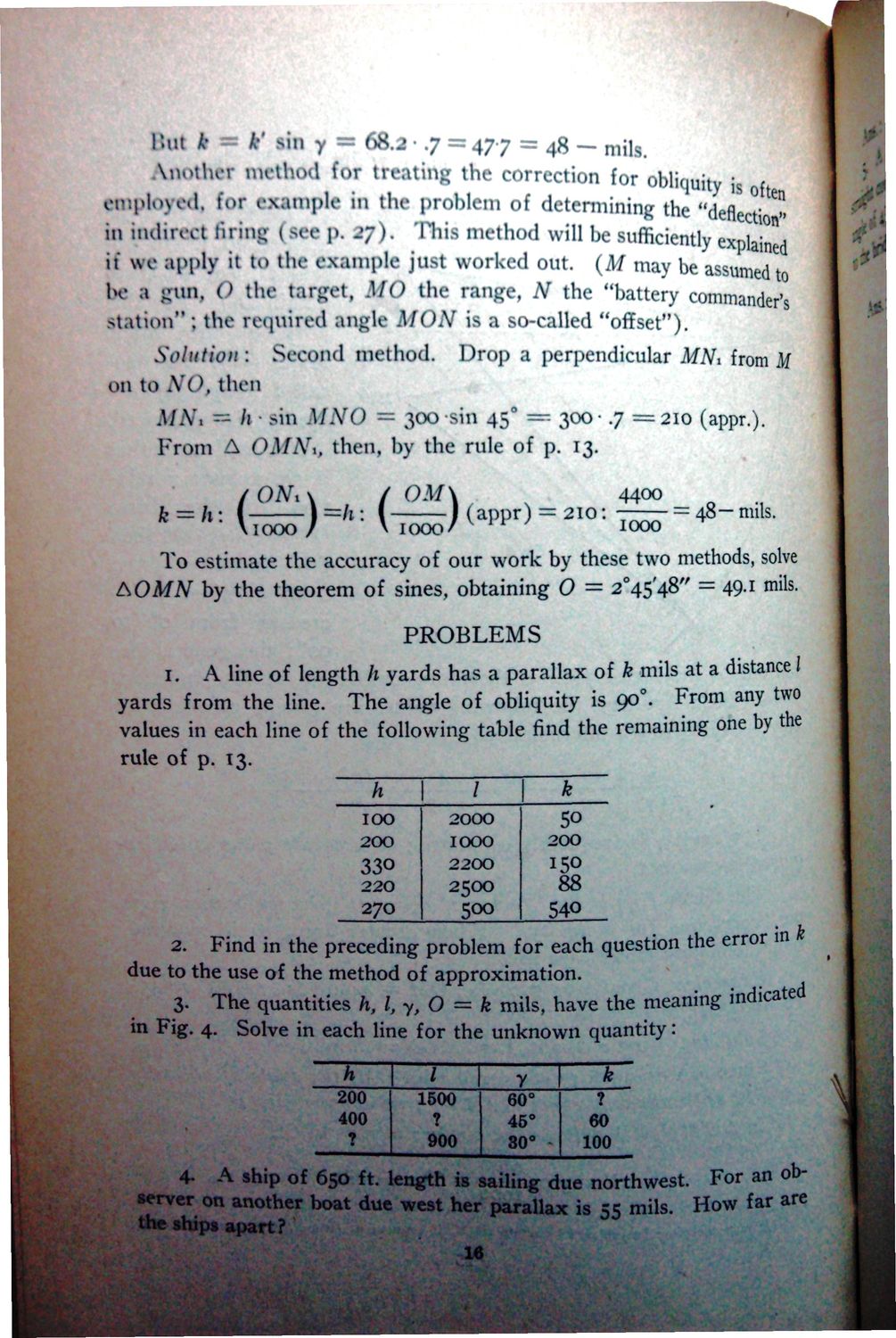Caption: War Publications - WWI Compilation 1923 - Article 46
This is a reduced-resolution page image for fast online browsing.

EXTRACTED TEXT FROM PAGE:
*' sin y I'.ut * ' -7 = 477 48 mils. W t h e r method for treating the correction for obliquity I n employed, to,- example In the problem of determining the "La in indirect firing | ee p. 27). Tins method will be sufficiently explai d it we apply it to die example just worked out. (jtf may be assumed to be a gun, 0 the target, Jl/O the range, N the "battery comm;mder'5 station" ; the required angle MON is a so-called "offset"). •?t 2 - 0 i i * 1 P Solution : Second method. Drop a perpendicular MNi from M on to NO, then 300 sin 45 300 • .7 = 210 (appr.). a/A', / t s i n M\'() From A OMNt, then, by the rule of p. 13. ON, k h 000 h OM 000 (appr) 210: 4400 1000 48—mils. To estimate the accuracy of our work by these two methods, solve 2°45'48" = 49.1 mils. AOA/AT PROBLEMS 1. A line of length h yards has a parallax of k mils at a distance / 0 yards from the line. The angle of obliquity is 90 . From any two values in each line of the following table find the remaining one by the rule of p. 13. k 2. Find in the preceding problem for each question the error in due to the use of the method of approximation. k mils, have the meaning indicated 3- The quantities h, I, y, O in Fig. 4. each h 200 400 1 I 1500 y 1 60° 46° 30° k ? 60 100 ? 900 ? 4- A ship of 650 ft. length is sailing due northwest. For an ober on another boat due west her parallax is SS mils. How far are apart 16
|